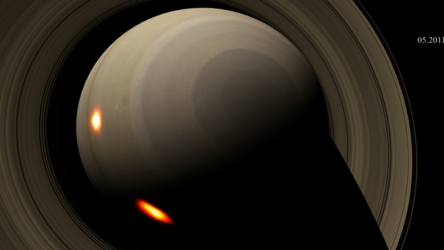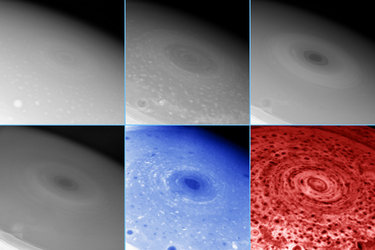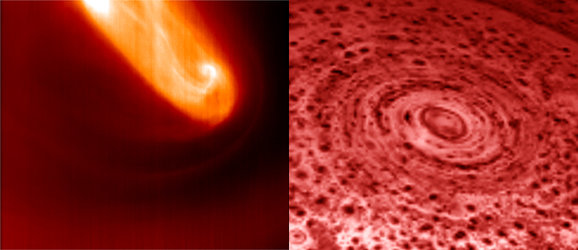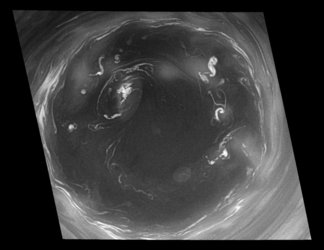
Evolution of Saturn’s storm
Animation showing the evolution of Saturn’s ‘Great Springtime Storm’ at infrared wavelengths with approximate timings given from January 2011 through to March 2012.
As clouds broke out in Saturn’s stormy troposphere (true cloud pattern not represented here), waves of heat travelled hundreds of kilometres upwards, depositing their energy as two vast ‘beacons’ of hot air in the stratosphere. Both hotspots travelled in a westerly direction around the planet, but the larger of the two travelled much faster, lapping the smaller one before they merged to create an enormous vortex that for a brief period exceeded even the size of Jupiter’s famous Great Red Spot. The giant vortex was visible only to infrared cameras, and persisted long after the clouds from the storm had faded away. The beacon laps the planet once every 120 days and is expected to have dissipated by the end of 2013.
The images comprise thermal data collected by NASA/ESA/ASI’s Cassini spacecraft, ESO’s Very Large Telescope and NASA’s Infrared Telescope Facility.
Credits: ESA–C. Carreau






